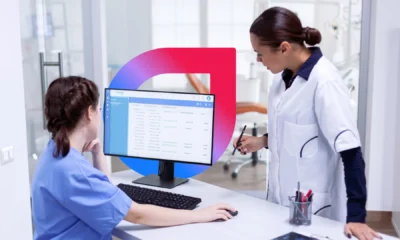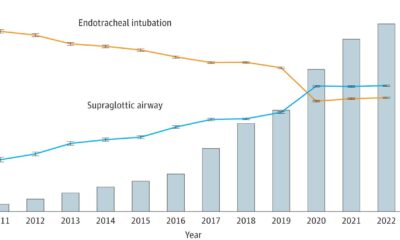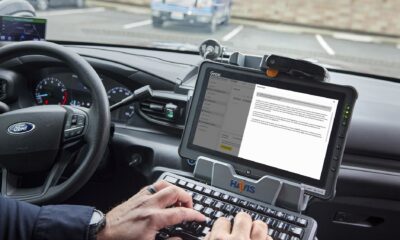Business
Industries that benefit from IoT device management software

The Internet of Things (IoT) is transforming business by enabling devices to communicate directly with each other and creating a highly connected environment.
As IoT networks grow, device management becomes increasingly important. Software that manages IoT devices plays an important role in this by ensuring that they are monitored, maintained and secured in an efficient manner.
We’ll look at the top five areas where IoT device management is having a significant impact. For example, these areas use IoT to increase their output by improving decision-making and performing smarter tasks.
Understanding the IoT ecosystem
The IoT is a vast system of interconnected IoT monitors that communicate with each other and share data over the Internet. These devices, from everyday household goods to industrial assets, are equipped with sensors and software that allow them to collect, process and exchange data.
Key components of the IoT ecosystem
- Devices/sensors:
The IoT ecosystem is built on devices. They are ‘things’ on the internet. They can measure their environment and collect data about the things around them.
This could be anything from simple temperature sensors in smart thermostats to more complex technology used in factories, complete with multiple sensors measuring everything from vibration levels to energy consumption.
- Connectivity:
The communication links that allow you to share data with other devices and with central systems are called connectivity.
Mobile networks, Bluetooth, Wi-Fi, Zigbee and more specialized IoT technologies such as LoRaWAN can all be included in this category. Range, data volume and battery consumption all play a role in the connectivity decision.
Connectivity ensures that data collected by devices is sent to a place for processing and analysis, which is essential for IoT communications. Typically, the data goes to local edge computing systems or cloud servers, where it is turned into useful insights.
- Data processing and analysis:
The processing and analysis of the collected data takes place on the device (edge computing) or in the cloud. Advanced analytics and machine learning algorithms can recognize patterns, predict events and initiate automatic actions, turning raw data into actionable knowledge. This component is essential for understanding the massive amounts of data generated by IoT devices and enabling real-time decision making.
- User Interface (UI):
The connection between the user and the Internet of Things is called the User Interface (UI). This could be an app, web dashboard, or other type of display that allows users to monitor data, control IoT devices, and receive notifications.
The user interface makes complex data generated by IoT devices accessible and practical for users, whether smart home owners or industrial plant supervisors.
Role of IoT device management systems
IoT device management thingsboard.io/device-management/systems monitor IoT devices during their daily tasks and ensure they operate smoothly and securely.
Key functions
Here are some of the key features of IoT Device Management:
- Device layout: This includes the initial installation and configuration of devices to ensure they are ready to connect and function properly.
- Monitoring and diagnostics: Real-time tracking of device performance and health to find and fix problems before they become defects.
- Software updates and maintenance: Enables remote updates and troubleshooting so devices stay secure and functioning even without physical interaction.
- Security management: Protects devices and data, authenticates users, and continuously monitors for security threats.
Advantages
The benefits include the following:
- Improved efficiency and uptime: Automation and real-time monitoring improve device performance, reducing downtime.
- Enhanced security: Strong security measures protect against cyber attacks and maintain data integrity.
- Simplified operations and cost savings: Centralized management simplifies business operations and reduces the complexity and costs associated with managing IoT devices.
IoT Device Management solutions are critical to increasing the efficiency, security and cost-effectiveness of IoT networks.
Top 5 Industries That Benefit from IoT Device Management Software
Here are five leading industries using IoT Device Management software to gain a significant competitive advantage:
- Production
Usage scenarios: predictive maintenance, asset tracking, quality control.
Advantages: It enables predictive maintenance, which minimizes downtime by predicting and preventing equipment problems. Asset tracking improves operational efficiency by monitoring the location and condition of machines and components. Quality control is improved through real-time data analysis, resulting in higher production and better resource management.
Success story: Siemens has implemented IoT device management software to improve predictive maintenance in its factories. This approach has significantly reduced the number of unexpected machine breakdowns and increased overall productivity, setting an industry benchmark for efficient manufacturing practices.
- Healthcare
Usage scenarios: Remote patient monitoring, equipment management.
Advantages: Healthcare IoT device management software allows medical professionals to remotely monitor patients by tracking vital signs and other health indicators in real time. This allows doctors to adjust treatment plans and better tailor them to individual patients, speeding their recovery. It also improves equipment management by tracking the condition and usage of medical equipment, resulting in better resource utilization and data security.
Success story: In the United States, Kaiser Permanente uses IoT for remote patient monitoring, allowing doctors to track patients’ health data in real time. This initiative has led to faster responses to medical conditions, reduced hospital admissions and has played a significant role in improving the overall quality of healthcare.
- Agriculture
Usage scenarios: Precision agriculture, livestock monitoring, supply chain optimization.
Advantages: It enables precision agriculture by collecting and analyzing data on soil conditions, weather and crop health, resulting in higher agricultural yields and less waste. Monitoring livestock ensures animal health and production, while optimizing the supply chain increases distribution efficiency, ensuring efficient use of resources.
Success story: In the Netherlands, the Dutch company Royal Brinkman has deployed IoT solutions for precision agriculture. By using sensors to monitor soil conditions and plant health, they have successfully increased crop yields and reduced water use, making their farming practices more sustainable and profitable.
- Transport and logistics
Usage scenarios: Fleet management, route optimization, freight monitoring.
Advantages: In the transportation and logistics industry, IoT device management software improves fleet management by monitoring vehicle health and performance. Route optimization techniques save fuel consumption and delivery times. Cargo monitoring ensures the safety and security of goods, resulting in lower operational costs, faster delivery times and increased safety.
Success story: In India, logistics company Rivigo uses IoT for fleet management and route optimization. This has led to a significant reduction in fuel costs and transit times, while also improving the safety of their drivers and cargo, positioning them as leaders in the Indian logistics industry.
- Smart cities
Usage scenarios: Traffic management, environmental monitoring, public safety.
Advantages: It is crucial for smart city projects. Traffic management systems help reduce traffic congestion and improve travel times. Surveillance and emergency response systems increase public safety, resulting in better urban planning and a higher quality of life for people. Environment Monitoring uses a variety of sensors to monitor both indoor and outdoor environments.
Success story: In Barcelona, Spain, the implementation of IoT for traffic and energy management has transformed the city into a model smart city. Smart sensors have improved traffic flow, reduced energy consumption in public buildings and increased overall public safety, demonstrating the potential of IoT in urban environments.
Find more cases here
Final thoughts
Adopting IoT Device Management software is essential for companies looking to take full advantage of the IoT ecosystem. IoT Device Management ensures devices are properly set up, monitored and maintained, resulting in less downtime, better resource management and better decision making. As the IoT environment evolves, efficient device management will remain critical to gaining a competitive advantage and driving innovation in many industries!











